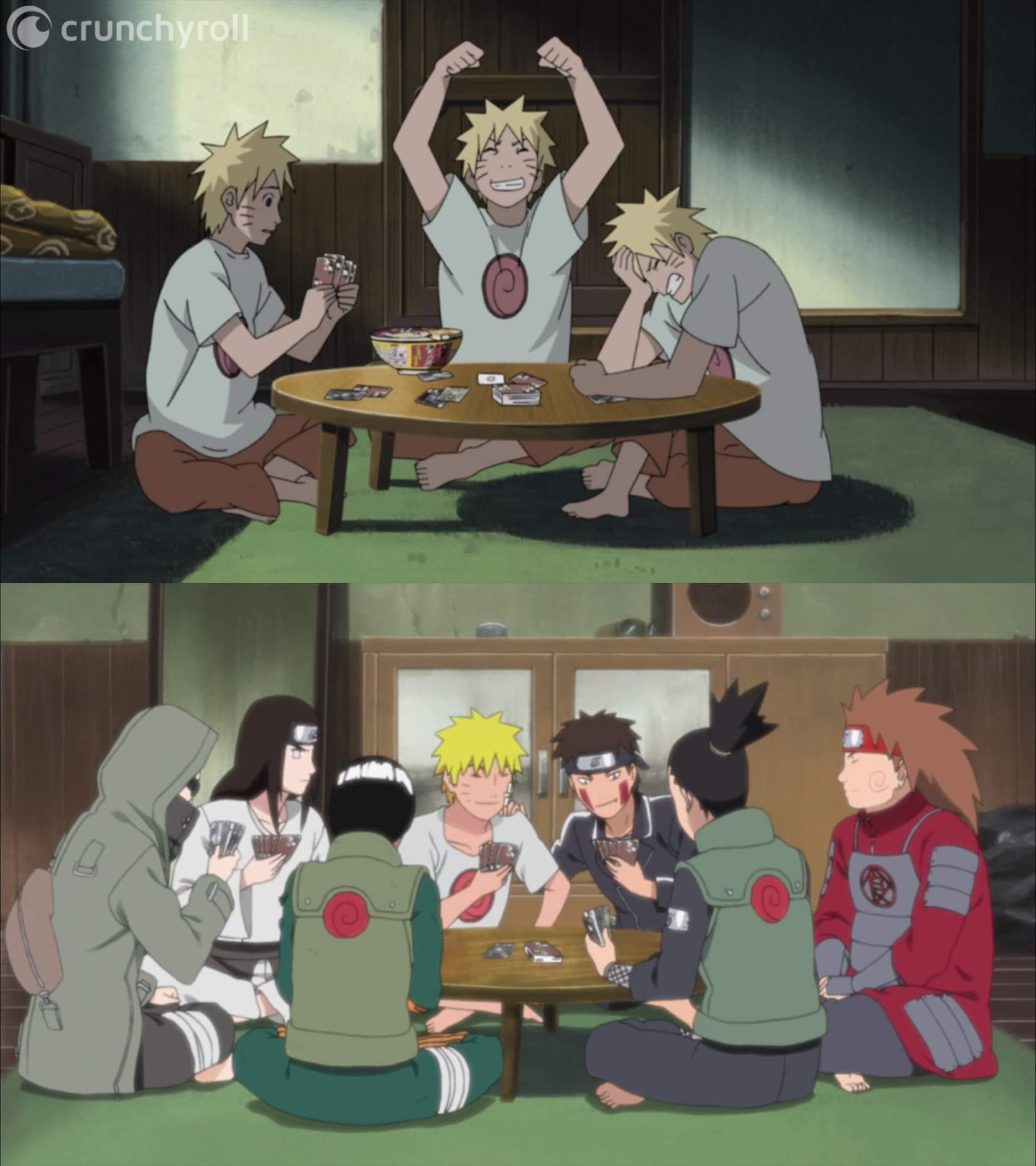Loneliness is arguably the overarching theme of Naruto. At a high level, the anime follows the story of a boy who is shunned by most in his village because they are afraid of a demon fox is sealed within him.
Naruto is a Ninja and, like many others in his village, is able to use some magical abilities that are associated with Ninjas. One of them is the ability to create clones of himself.
A few days back, I saw this image shared on Facebook, which captures the essence of Naruto’s journey from the time when he had only his clones to keep him company to when he had real friends.

In the second scene, there are real (other) people in the room while in the first it is only Naruto and his clones. It may not be the most intuitive question to ask, but how different are the two situations? Or to be even clearer, what is the difference between the two instances captured above?
A most obvious difference would be that all the people gathered around the table in the first instance look the same. This is a minor problem that another of Naruto’s techniques, called transformation (henge), can fix. Naruto himself, and each of his clones can transform into another person or object.
With this ability, Naruto will be able to create that second scene without involving anyone else, and to such a level of accuracy that we won’t be able to tell the difference from a photograph.
But a photograph with friends is not what Naruto ever wanted, and he would not trade his ‘real’ friends for anything else. But what makes these friends any more real than his clones?
An obvious point will be the individuality, traits, different characters of these friends, and their sense of different identities? After all, all of Naruto’s clones would be similar to Naruto at the time of their creation, and they would all identify themselves as Naruto even if they were to disguise as someone else.
What if Naruto created a few clones when he was very young, and they all transformed to look different, got separated, assumed new identities, grew up under different circumstances, and forgot all about who they really are?
If they were to be friends later, would that be as good as real friends? If not, what would still be different? In other words, if the clones all look different and identify themselves as separate individuals, and if Naruto himself does not realize that those are his clones, will they qualify as real friends?
Now comes the interesting part. What if the really real friends and others around me are in reality diverse images of my single Self? This is the Advaita (non-duality) philosophy of Vedanta according to which there is only the Self and nothing distinct from it.
This can be understood with the analogy of a dream, in which we may be partying with friends or fighting enemies, but these friends and enemies are all merely images in the mind of the dreamer. It just happens that the dreamer identifies himself with one of these images, treats some as friends and some others as enemies.
Similarly, all that we see around us, are reflections of our own Self, images within ourselves seen like a dream. Not realizing this leads to fear, desire, anger, and other aberrations in our blissful existence.
Naruto’s problem was knowing that his companions are not different from himself, but our problem is not knowing it! Isn’t the contrast interesting?
Further reading:
- Philosophy of Naruto Juxtaposed with Vedanta – A previous post on Avalokanam, covering a related topic
- Brihadaranyaka Upanishad, explaining the cause of creation, says that in the beginning there was only the Self, who did not enjoy the state of being alone and went ahead with creation! (Ref. verses 1.4.1, 1.4.3 among others). Of course, it makes no sense to take parts of a couple of shlokas and interpret out of context, but I found the similarity with this discussion interesting. Hence linking to the text for those interested in understanding the full context.